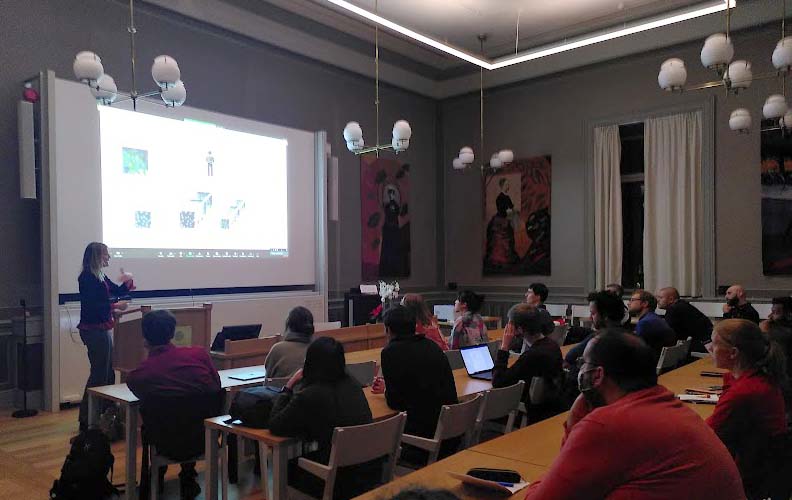POSTS
BiophysXmas 2022
Program
Kristina Jonas – Stockholm University
Mechanisms of regulated protein synthesis and degradation in bacterial growth control
The Jonas lab uses a multi-disciplinary approach to investigate the mechanisms by which bacteria control their own growth and reproduction, and respond dynamically in response to fluctuating external conditions.
Johan Elf – Uppsala University
Automated fluidic assays - PA100, Spinning Jimmy and beyond
Magnus Johansson – Uppsala University
Limitations of our current single-molecule tracking approach, and possible ways forward
Ethan Garner – Harvard University
Preliminary Title: A system that measures lipid II to modulate the growth rate of cells
The Garner lab studies the organization, structure, and dynamics of the prokaryotic cytoplasm, elucidating how small collections of genes are able to impart long range order to cells.

Carolina Wählby – Uppsala University
Possibilities and limitations of AI and image analysis as tools in Life Science
The Wählby group uses artificial intelligence, in the form of deep learning and deep convolutional networks, to develop digital image processing tools and analysis methods for the life sciences.
Stephan Uphoff – University of Oxford
Phenotypic heterogeneity in bacterial stress response
The Uphoff lab seeks to understand the mechanisms of DNA repair and mutagenesis using a quantitative interdisciplinary approach. A key aspect of the research is developing fluorescence microscopy techniques to visualise molecular events in real-time within living cells.